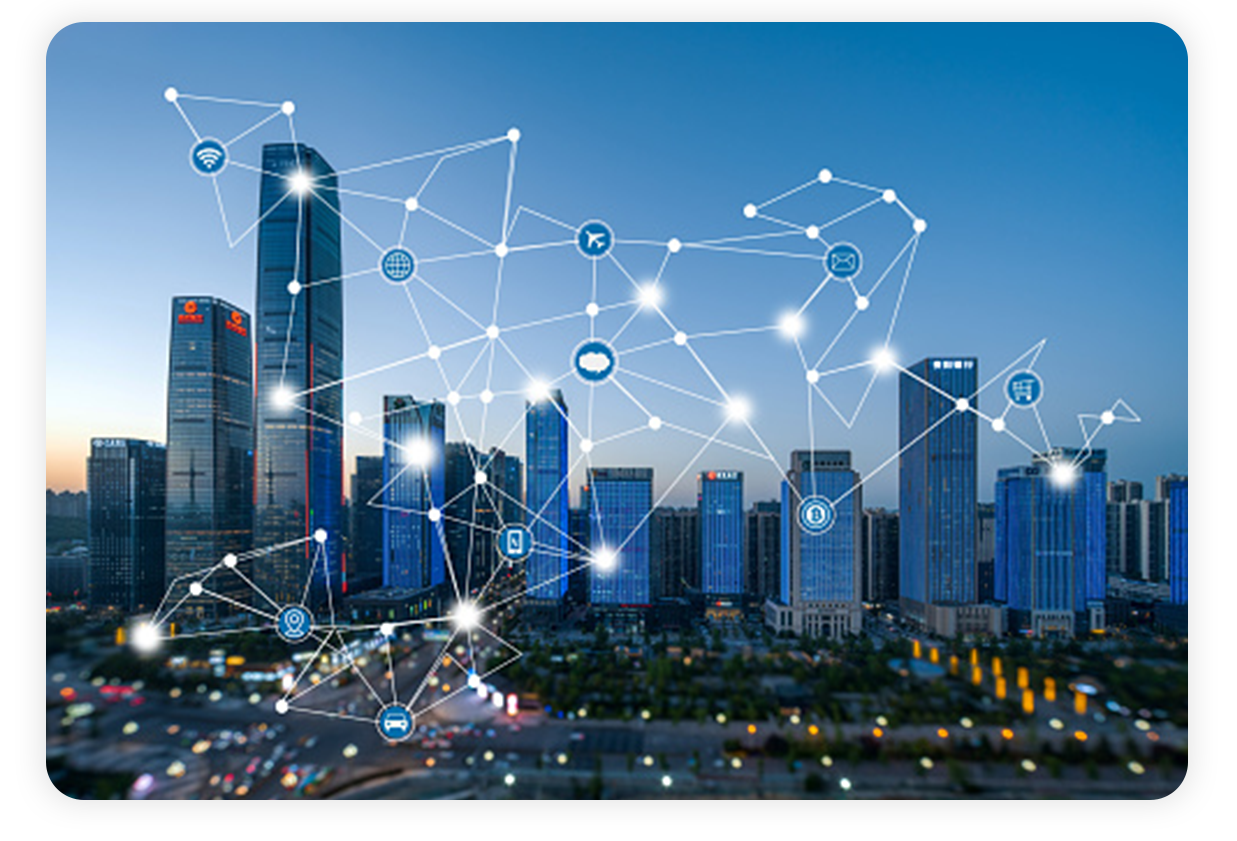We’re entering the fourth year of the post-pandemic commercial real estate world. Average weekly office attendance is roughly half of 2020 levels but attendance swings dramatically day-to-day. Days with peaks are closer to pre-Covid levels while others have much lower occupancy. Fridays are almost empty. There is a lot more being asked of offices. Workers want spaces that support their hybrid workstyle—and are worth the commute. Meanwhile, climate change concerns are driving occupier businesses to demand more energy-efficient operations from their landlords.
This new dynamic real estate market requires greater responsiveness and efficiency from owners and operators to succeed. This situation is transforming how this historically conservative industry views real estate technology, shifting from merely testing new innovations to accelerating adoption for maximize immediate impact. JLL’s 2023 Global Real Estate Technology Survey shows that over 80 percent of respondents, who were both occupiers and investors, are planning to increase their technology budgets despite a challenging operating environment. Ninety-one percent of occupiers say they are willing to pay a premium for tech-enabled space.
While the technology they will invest in is still being determined, we know that the technology that will be most relevant are solutions that can streamline building operations with automation and real-time insight into property use, enable greater freedom for hybrid workers, and protect against the growing risk of cyber-attacks that are inherent in building systems. Here are some of the ways that the trends in commercial real estate are impacting the technology that buildings are equipped with.
Dynamic occupancy
In a hybrid world, the need for commercial space remains, but the quantity of space and duration of time that is needed has shrunk. The commercial operators that can employ technology to accommodate this evolving behavior will most effectively and efficiently survive in this new environment.
The good news is that occupancy continues to rise. The rate of improvement is not noticeable day-to-day, but when looking at workplace occupancy year-over-year, it has been slow but continuous. However, it’s doubtful that occupancy will fully return to 2019 levels, and commercial property operators, especially in older buildings, need to find ways to use surplus space more dynamically.
How landlords accomplish that operationally will vary, but it will likely involve adoption of more robust occupancy tracking technology to gain real-time insight into the highly dynamic nature of hybrid attendance, which varies more significantly day-to-day than pre-Covid activity.
Many legacy systems (access control, video, etc.) simply aggregate data into daily totals. For hybrid activity, operators will need real-time data that differentiates attendance volume and frequency between the various tenants, co-workers, visitors, and any special programming that use office or amenity space to attribute engagement by user.
At Kastle, we refer to this as “Active Occupancy” where we measure access activity patterns by individual tenant occupant over time rather than the more traditional view of occupancy that is measured by leased versus non-contracted space which is a rather static way to measure in this new dynamic environment.
Access control is the most widely used method for gauging occupancy since it’s already a business necessity for security, but there are a variety of other workplace occupancy tracking technology options to consider such as video surveillance, space sensors, and others, each with unique benefits. Tech-savvy operators may adopt a combination of these tools for greater insight into occupant behavior.
Open mobility
The mobile-first world that smart devices and cloud computing have unleashed enables an employee’s work location to change each day based lifestyle-centric needs such as avoiding long commutes, finding childcare, easier parking, and other concerns. Today’s daily routines have greater variability and mix multiple locations, from a central office and home workspace to satellite coworking and hoteling spaces closer to where they live, or maybe traveling.
As such, the workspace is fluid, and “landlords” who enable and encourage this behavior by providing entry into multiple locations near and far as part of a tenant’s lease will become more attractive to businesses–creating a lease that is more like a subscription or membership. In this model, access control is less about keeping people out of buildings and more about enabling people to enter more places.
While this may sound technically challenging and less secure operationally, on the contrary, new technology is in development that will simplify individual access between buildings even if they are run by different operators with inconsistent access systems manufacturers (a major hurdle for current access control). A new connectivity standard, called Aliro, was announced in November by the Connectivity Standards Alliance made up of hundreds of IoT device manufacturers, led by the likes of Apple, Google, Samsung and Amazon. It establishes a common way for these previously proprietary, non-reciprocal platforms to become “open” to processing one another’s access signals to verify a user’s access privileges as assigned at the master active user directory for the property management organization.
Access rights will be tied to an individual user identity that resides on a user’s phone, like with mobile payment apps. Those privileges will be administered by the Aliro-compliant credential manager app when the user initiates the transaction between the device and the Aliro-enabled reader, which can interpret the Aliro-generated signal regardless of the access credential provider or the building access system.
This seemingly technical detail will unleash transformational freedom for users to move between authorized spaces with only one app on their phone. It will be equally ground-breaking for landlords who gain the ability to manage a mix of hardware and software while covering a wide variety of user devices, massively streamlining the management and maintenance of access operations across portfolios. It will also empower landlords to offer “fluid” access to multiple workplace locations beyond a single building, thus embracing the mobile nature of tenants.
While this standard is still in a developing stage, access control providers will be rapidly creating new platforms that will be prepared to accept Aliro when it goes mainstream so that they avoid selling systems that could be obsolete in a few years. The first Aliro-compatible access system, Kastle EverPresence™ was announced just after the Aliro launch.
Building efficiency
Sustainability mandates and the need for more operational cost efficiency continue to drive the market for smart buildings. A key aspect of smart buildings is the ability for their systems to adapt quickly to change to optimize efficiency to reduce a building’s carbon footprint. In a hybrid world, where office attendance fluctuates each day, system adaptability will be in greater demand than ever. More importantly, tenants and real estate professionals are now more apt to seek sustainable properties over non-green ones, as more businesses adopt their own decarbonization goals.
Cisco Systems has estimated that smart buildings will comprise 75 percent of all new commercial construction by next year. These trends are pressuring legacy properties to finally address the need to retrofit smart building technology in their older buildings if they want to compete for tenants. Given that existing buildings make up over 90 percent of city infrastructure, that urgency will dramatically increase demand for smart building technology.
Fortunately, retrofitting a building with smart technology is not as expensive as it once was. You can employ modern sensors wirelessly, without installing expensive hard-wiring and still reap the benefits of low energy use and maintenance. This latest smart technology is lightweight and compact enough to fit into even hard to reach areas with signal boosters that can extend their range through and around thick walls.
Cyber risk and AI
The downside of smart building technology is the greater potential vulnerability to cyber risk. These intelligent systems rely on the internet and are networked together with IoT connections sharing data continuously. As noted in Siemens’ whitepaper, New Criteria for a New, Smart Building Era, “An IoT configuration offers multiple points of entry for potential hacking. That exposes both building information and operational technology systems…cross contamination risk is real.”
Key technologies for a first line of defense are physical access control and occupancy monitoring (already discussed) since physical intrusions by the wrong people can lead to cyber-attacks of building systems. But more broadly, the challenge of securing both a building operational technology (OT) and the IT system that uses data generated by the building and its occupants, creates a very complex ecosystem. The resulting patchwork of firewalls, software updates, and endpoint security practices across computers, IoT devices, and sensors, can become massively unmanageable.
This is where Artificial Intelligence is poised to help. Advanced owners of smart buildings will deploy Security Information and Event Management (SIEM) solutions within their smart building infrastructure, to collect, analyze, and correlate log data from disparate devices and systems to rapidly detect anomalies that reveal suspicious activities and security incidents. These systems harness massive machine learning to discern typical network behavior and uncover irregularities for rapid threat identification and response, much faster than human staff.
It’s still early days in many of these technologies, and the industry-wide adoption will not be anywhere near complete by this time next year. However, the challenges in the market will start to snowball the use of new tech in buildings. While most of the real estate industry will not have adopted these tech solutions in the next 12 months, tech-savvy owners and operators are at least planning for it now.





